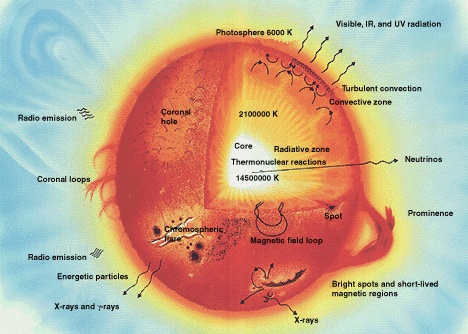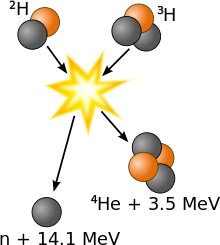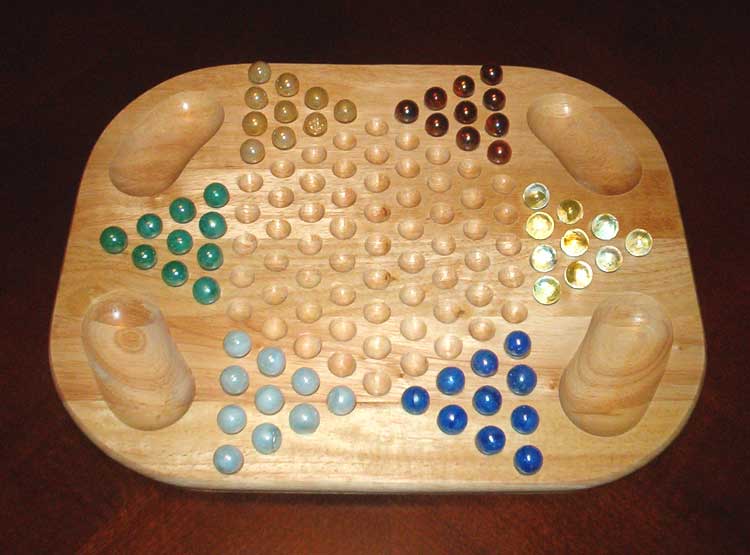 Here we can see the inner workings of a star.
Here we can see the inner workings of a star.
Just like any curricular set piece, teachers can refine and optimize games to make sure they are meeting their learning objectives. In this article I’d like to share an example with the readers of Spielbound.org from a course that I teach at my school. What decisions did a colleague make to improve the Nuclear Fusion game to maximize student learning?
One of the critical aspects of astronomy instruction at the high school level is to help students to understand where larger elements of the Universe come from. The Big Bang produced largely Hydrogen and Helium. So where do all of the heavier elements that living things use (carbon, oxygen, and iron, to name a few) come from? The short answer is that they are fused from smaller atoms inside the cores of stars. We are literally made of star stuff, as so famously described by Carl Sagan. That fact is all well and good, but professional science educators want and need students to know the process by which this occurs. What is actually happening in the core of that star?
 A real world example of nuclear fusion between
two hydrogen atoms: deuterium and tritium.
A real world example of nuclear fusion between
two hydrogen atoms: deuterium and tritium.
My colleague, Angela Bergman, found a nuclear synthesis game published by Zach Constan at Michigan State University’s JINA Center for the Evolution of the Elements. In this game, students use magnetic marbles to simulate random interactions between protons and neutrons in the cores of stars. With the roll of two six-sided dice, these random collisions produce large or smaller elements. Students play head-to-head, tracking their progress as they build larger elements with these marbles with the goal of getting a sense of the process by which elements are built in stars in a race with their opponent. One possibility is an atomic “bombardment” in which students drop their nucleus into a box to simulate a potential breakdown of a constructed nucleus. The precise events are recorded on a sheet that Angela developed to help students track what changes occurred. This table was not included with the original game. She also developed some reflection students were required to answer so that we could measure what they learned from the game. Finally, Angela obtained the materials needed to play the game and included it as part of a student choice activity in which students could learn about stellar evolution by completing at least four of six activities to choose from. We know, of course, that students learn best when they are given options to pick from. One of the challenges of personifying the learning process is to make sure that students will meet the objectives no matter which learning opportunities they choose.
Educators in the audience will know that the story doesn’t end here. Just because a game is offered in the classroom does not mean it will have the intended effect with students. We did our best to support students who chose the game as one of their four opportunities. We knew that we would need to refine the game based upon what we saw working and not working. An immediate takeaway for the first run through was that the game, as designed to play to “completion”, was too long for the time we had available. The game starts with a lot of fun, especially when a “bombardment” occurs, but could get quite tedious after about a dozen rounds. Following the nucleus tracking sheet was a challenge for students. A final challenge was that counting the subatomic particles within a nucleus and keeping the nucleus together in the first place was a challenging process. So, where do we go from here?
Well, we certainly don’t give up. The benefit of having a semester-long class is that we have the opportunity to affect change to the game within the same school year. It was clear right off of the bat that we could preserve the point of the game without it being quite so long. The first fix was the easiest, minimize the expected number of game steps. Every student approaches games differently. For some, they want to complete a game in a friendly competition. For some, they want to get a taste and have a little fun while doing it. Motivated students could complete a game in the allotted time. Students approaching more casually could get the idea within about ten game rounds. Flexibility is a critical element of gamification. It was clear to us that everything possible needed to be done to present the game as an interesting curiosity rather than a chore.
To further emphasize the tactile nature of the game, Angela also purchased Chinese Checkers boards and painted them in a stellar-nebula theme. The purpose of these boards was to give students a substrate to make it easier to keep track of and count their marbles. It doesn’t hurt that the geometric shape of the board is a star.
Students took to these changes quite well. We found that not only did more students select the Nuclear Fusion Game as one of their learning options, but they enjoyed the experience much more. A review of their reflection questions also revealed, most critically, that they understood the nature of colliding and fusing nuclei, which is the whole point!
Do you need help adapting a game for your classroom? Would you like to discuss options? Don’t hesitate to send an email to teachers [at] spielbound.org and we can start a dialogue!

